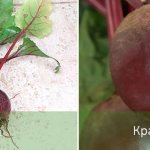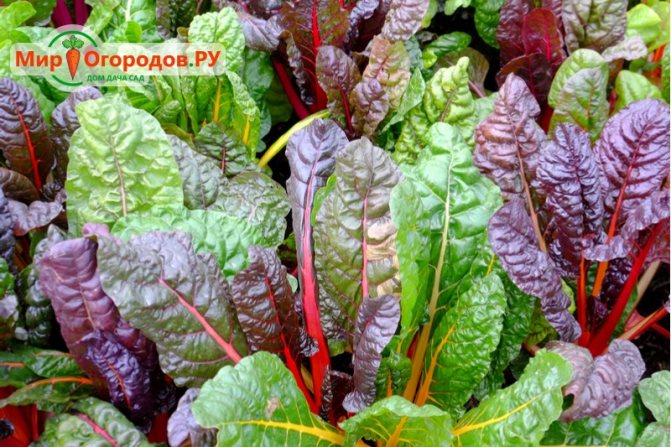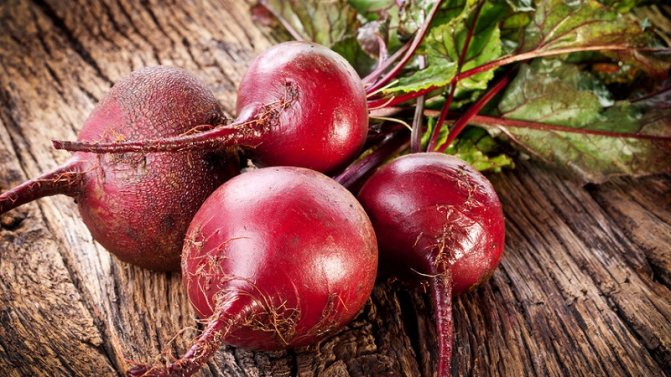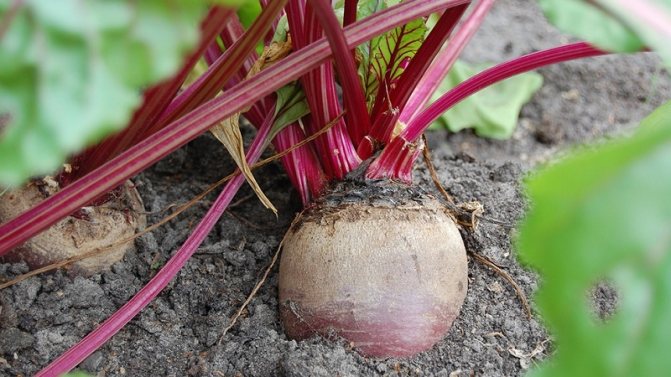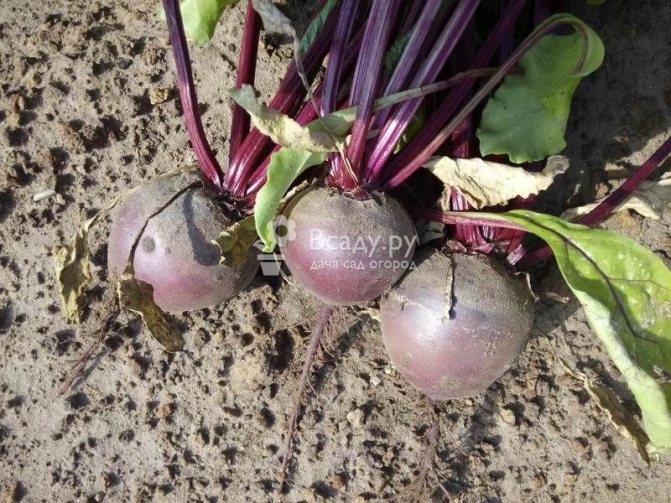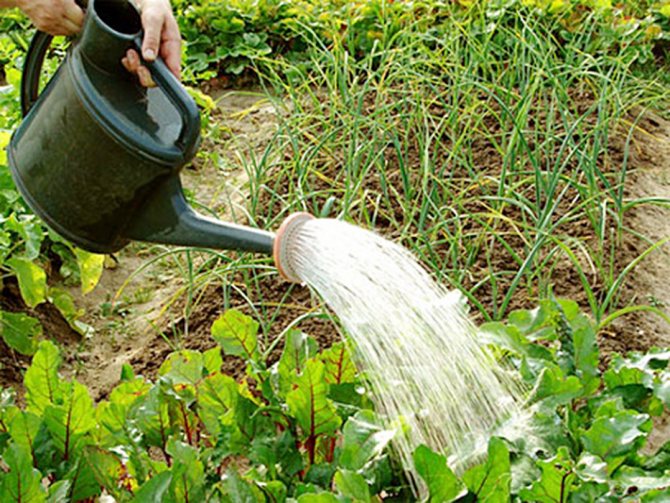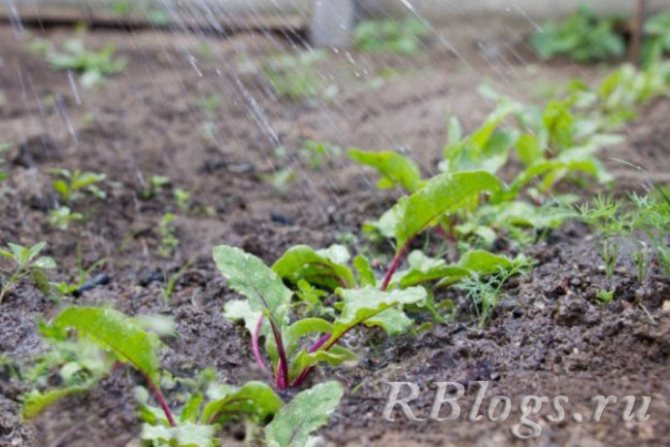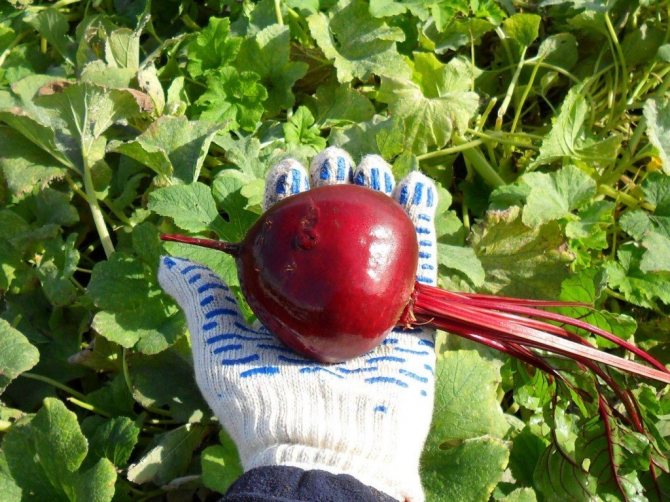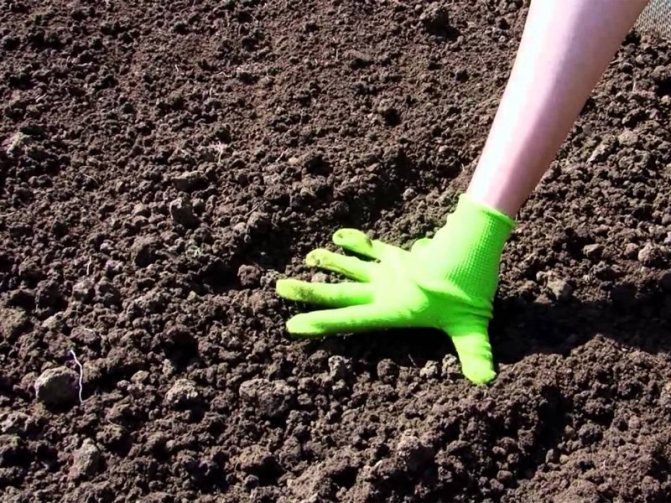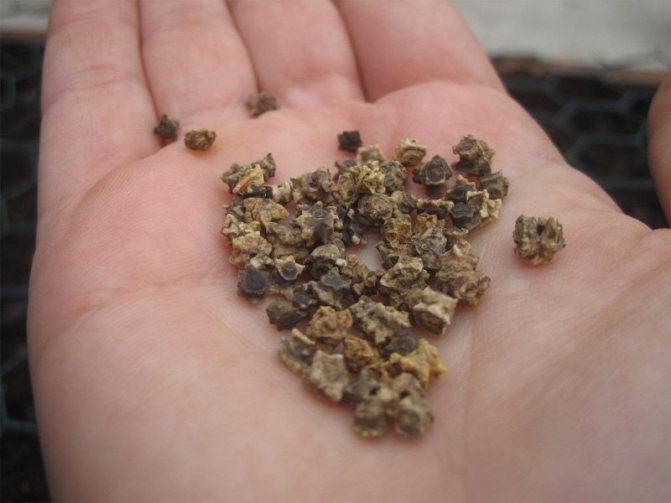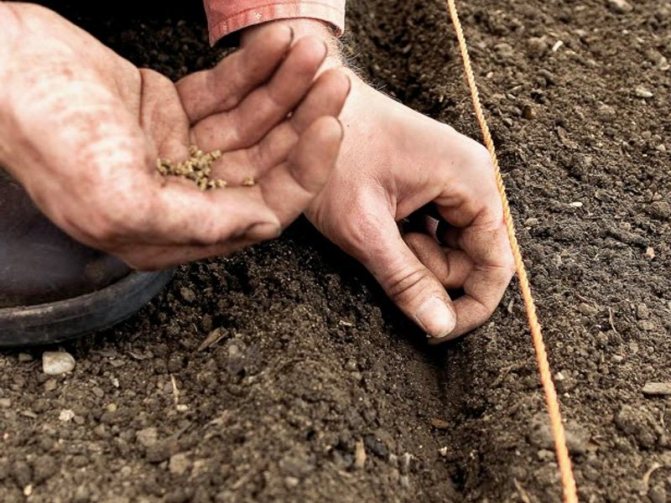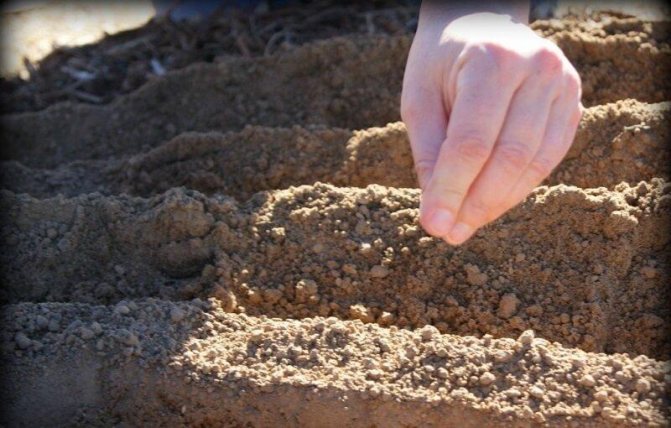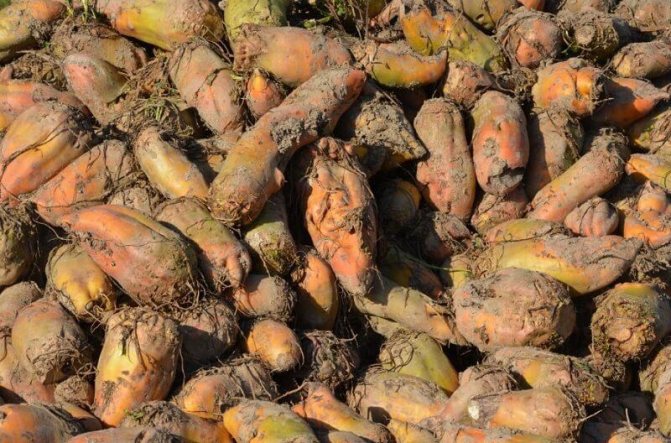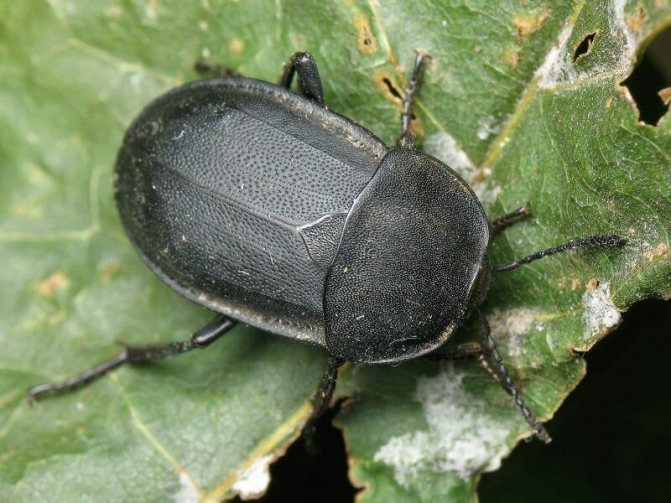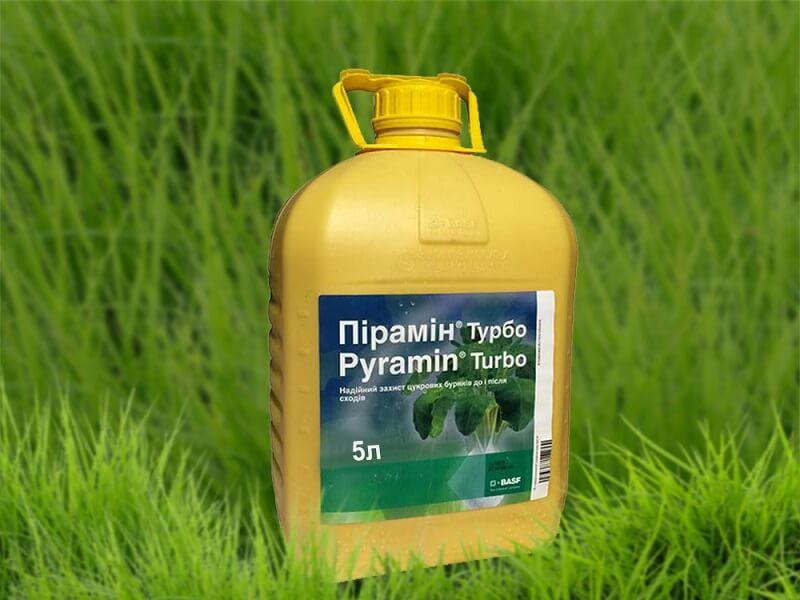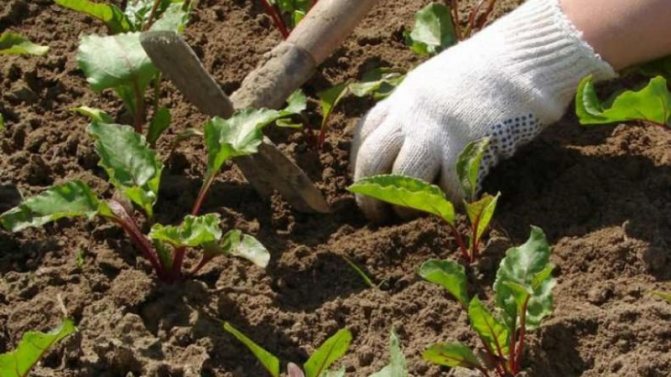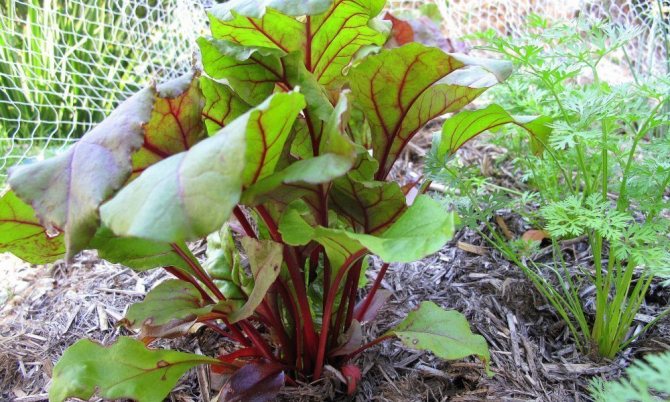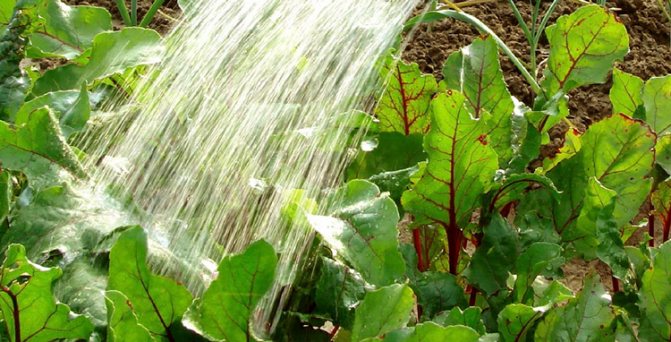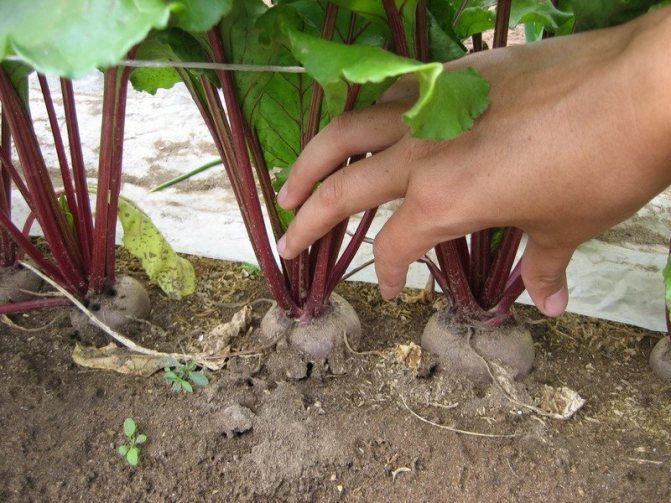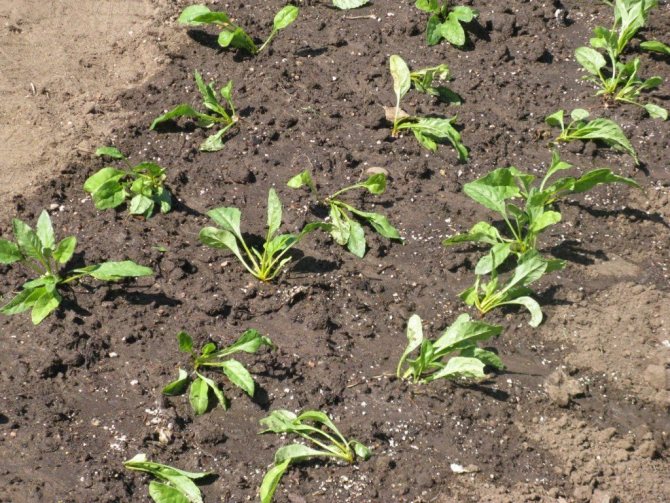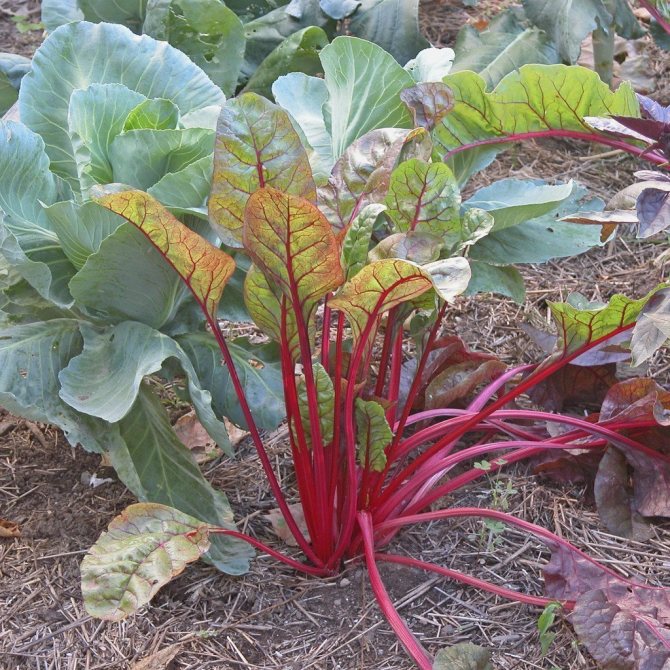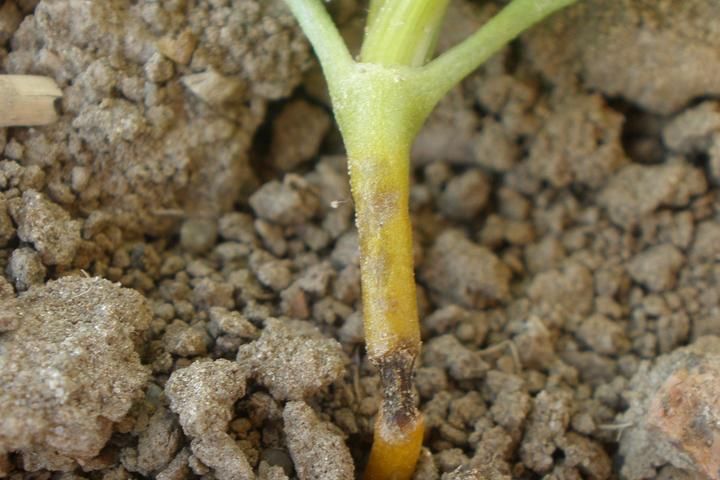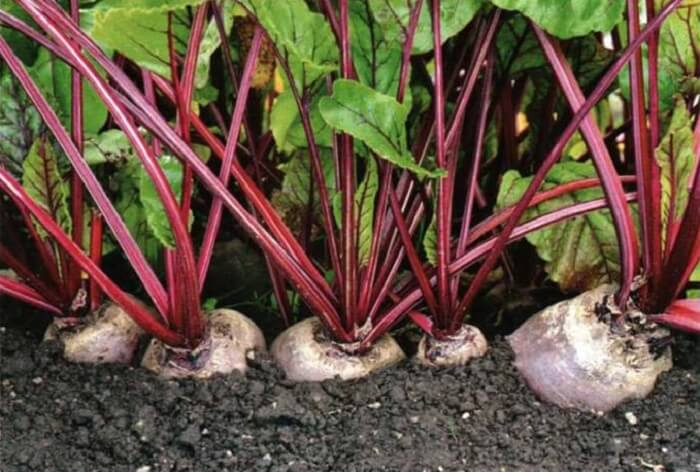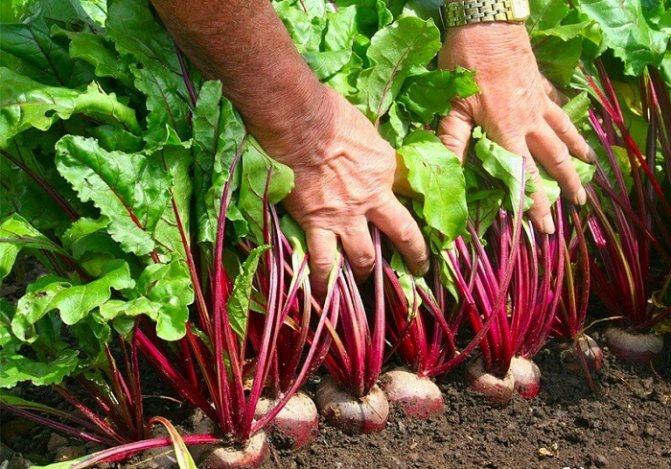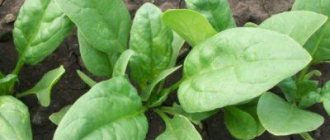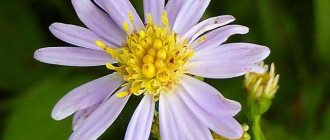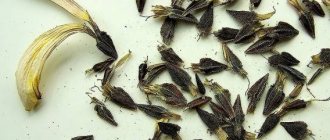About 2000 years ago, the first root forms of beets appeared, which were widespread in the Mediterranean countries. Great popularity and distribution beet received in Russia. But only by the 19th century, the root varieties of this vegetable became separate groups - fodder, sugar and canteen. Despite the large differences between varieties of different groups, they all belong to the same botanical species, and, therefore, are pollinated with each other. Therefore, get your own high quality beet seeds pretty hard.
Beet belongs to the Marevye family. It is an extremely diverse family, which includes spinach and, by the way, weeds such as marsh and quinoa. Initially - 2000 BC. - beets were grown as a leafy vegetable. And today one of the varieties of beets - Swiss chard - is eaten in the form of leaves.
Variety selection
When choosing planting material, it is necessary to consider for what purpose it is grown. Beets are divided into sugar, table and fodder beets. All of its varieties have differences in color, appearance of the root crop and ripening time. Anyone can be cultivated, given their characteristics. According to the ripening period, they are divided into: early, middle and late.
Early ripening varieties are used in dishes in the summer, while others are kept for a long time. When choosing seeds for planting, be sure to take into account the distinctive features of a particular region. This is necessary to grow mature fruits.
The best varieties include:
- Early: Red Ball, Naval, Egyptian. Reaching a diameter of 2 cm or more, they will be suitable for use. Young leaves are added to salads and soups.
- Medium: Mulatto, Bohemia, Bona. Poorly withstand sudden temperature fluctuations. Stores well in winter. It is better to plant in areas where it is impossible to grow late varieties due to climatic conditions.
- Late: Cylinder Late maturing, Renova. For them to ripen, you need 4.5-5 months of suitable weather. Grow best in areas with hot summers.
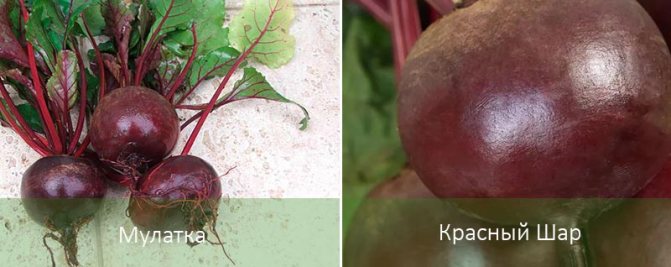
Soil preparation
Having decided when to sow beets in open ground, let's start preparing the soil.
It is best to prepare a bed for planting in the fall. First of all, it should be dug onto the bayonet of a shovel and loosened well. It is advisable to add half a bucket per m2 of rotted compost or humus to the soil (fresh manure is not recommended). If the acidity of the soil is high, it is recommended to add dolomite flour, lime or chalk when digging at the rate of 1 cup per m2 (you cannot add it in spring, this can cause a root vegetable disease such as scab). Before sowing, the soil should be fertilized, the following mixture is suitable: 10-12 teaspoons of boric acid, 1 teaspoon of magnesium sulfate, about 2 glasses of ash and a tablet of trace elements (all per m2). Chlorine-containing fertilizers should not be applied for planting, but magnesium is very fond of this root crop. Growing beets in open ground on sandy soil requires the introduction of peat, turf and humus on the site (1 bucket per m2). A full bucket of peat and coarse river sand is added to the clay soil with the addition of two liters of stale sawdust, which should be treated with a urea solution beforehand.
Planting beets according to the lunar calendar in 2019
This vegetable is planted in a well-warmed ground + 6 ... + 10 ° С. Planting dates depend on the specific area and on the variety. In the southern warm regions (Krasnodar Territory), seeds are sown in the first half of spring, in the central European part of Russia (for example, in the Moscow region) - in early May, in the Ural region, Western and Eastern Siberia - in late spring. These are indicative dates for mid-season varieties. Early varieties are best planted early and later varieties later. This is taken into account if you want to get a good quality root crop. Specific dates are selected using the Lunar calendar.
| Region | Auspicious days | Bad days |
| Kuban | March: 10-12, 15-17, 23-25, 27-30. April: 2,3, 7-17. | March: 6, 7, 21. April: 5. |
| Middle lane | April: 2, 3, 7-17, 24-27, 29, 30. | April: 5, 19. |
| May: 1-4, 12-14, 21-23. | May: 5, 19. | |
| Ural and Siberia | June: 9-11, 18-20. | June: 3, 4, 17. |
| July: 25-31. | July: 2, 3, 17. |
General characteristics of the table vegetable culture
The table beet variety is a biennial crop. The root crop is large, weighing up to 1 kg, maroon color. The appearance of the fruit is from round to flat. The leaf is wide, rich green. In the second year after planting in the ground, flowering and seed formation occurs. The time from planting to the formation of formed root crops depends on the variety, climatic conditions and ranges from two to four months.


There are four categories of beetroot, depending on the time of fruit formation:
- early ripening - 65-80 days (Bikorez, Solo)
- early ripening - 80-100 days (Vodan, Barguzin)
-medium - 100-130 days (Bordeaux 237, Bonn)
- late ripening - 130 days or more (Slavyanka, Cylinder)
Choosing a place for planting beets
This is a pretty crucial moment if you want to get a good harvest. You cannot plant a culture every year in the same place, it is better to choose a new one for it every time. Take into account which vegetables were grown earlier. Good for beets, if they were crops of the family of nightshades, pumpkin or onions, and after cruciferous (all types of cabbage, radishes, turnips), it is not recommended to plant.
The site should have a lot of sunlight. It must be watered abundantly, but the water is not allowed to stagnate. The soil is selected sandy, with good air and water conductivity, pH 6.5-7. Sandy loam and loam are suitable.
Proper watering
During the cultivation of the crop, the correct watering regime must be observed. Beets need to be watered regularly, but waterlogging of the soil should be avoided. An excess of moisture causes various diseases and a decrease in the shelf life of the crop. With a lack of moisture, the pulp of the root crop loses its juiciness and becomes rough.
During mass seedlings, caring for beets involves watering up to once a week. During the formation of root crops, the frequency of watering can be increased. Watering is stopped 3-4 weeks before harvesting.
Seed treatment
Seeds must be prepared before sowing:
- Check their suitability by placing them in 200 ml of water with salt. Those that rise to the surface are thrown away.
- They are dipped alternately into hot water, and then into cold water several times, keeping for 1-2 hours in each, and quenched.
- Keep for 12 hours in a solution (2-3 grains of manganese per 1 liter) - for disinfection.
- Soaked in a stimulant.
- Germinate if you want to get seedlings.
If they are sown before winter, then they only check and disinfect. The rest of the steps are not performed, so that shoots do not appear, and the plant does not die.


Harvest
If the beets were planted in the spring, then the harvest must be harvested before the onset of frost. Harvesting begins in late September or early October. By this time, most of the leaves turn yellow and wither. If the roots freeze, then they will not be stored for a long time and will lose their taste.
After harvesting, the root crops are sorted, the tops are cut, leaving hemp up to 1–2 cm. Healthy root crops are dried and stored at a temperature of +3 degrees. You can store the harvest of beets in boxes with sand, peat, sawdust.
The technology of planting beets in open ground with seeds
Beetroot (beetroot or beetroot) belongs to two years old. Seeds for planting are obtained in the second year from the arrow, and the root crop, which is eaten, in the first. They are planted in prepared grooves spaced 25-30 cm apart. The earth is well watered, and then they wait until the moisture is absorbed, but does not dry out. Seeds are covered to a depth of 2-3 cm, leaving a distance of 1.5-2 cm between them. They are covered with earth from above, while leveling the grooves. Water again. If the seeds are not germinated or they were not kept in water, then the sprouts will appear in half a month. Otherwise, seedlings will be visible after 7 days.
Beneficial features
There are legends about the beneficial properties of chard beet leaves, but they are not far from the truth. It has been scientifically proven that green tops are even superior to root vegetables in terms of the content of potassium, iron, vitamin K, and some antioxidants. Here are some of the benefits of consuming vitamin greens.
- The low-calorie product contains a lot of coarse dietary fiber, which stimulates intestinal motility.
- Antioxidants retanol, betacyanin and others help the liver to remove toxins from the body, prevent aging, cell transformation.
- It has a positive effect on the processes of hematopoiesis, lowers cholesterol levels.
- Thanks to calcium and vitamin K, it strengthens bones.
- Normalizes metabolism, promotes fat burning.
Technology of planting beets in open ground with seedlings
You can get an early harvest of beetroot if you use seedlings. Thus, it is common to collect some of the root vegetables, and the rest through the seeds. The landless method works well and does not require a lot of space. Then young plants dive, planting them in greenhouses near tomatoes. Additionally, nightshades will be protected from disease.
The procedure for obtaining seedlings:
- toilet paper is put on a plastic bag, folded several times;
- moisten from a spray bottle;
- place the seeds on top, leaving 1 cm between them, and retreat from the edge by 1-1.5 cm;
- roll the paper into a roll and place it in a container, covering it with cellophane on top;
- directing the empty edge down the container;
- sign the name of the variety for memory;
- move the container to heat, where a little water is added to it, and the paper is sprayed from time to time.
Seedlings will appear in 7 days. They are planted in well-heated soil, having prepared deep pits in it. The roots in the holes should not bend. They are gently pressed against the soil. Seedlings are watered abundantly.
Sowing technique
Now that you've figured out when to plant beets, it's time to learn how to do it right. Sowing beets is possible in four ways.
Lowercase
At the landing site, rows are cut with a depth of three to five centimeters at a distance of 20 to 30 centimeters from one another. Furrows are thoroughly watered with water using a watering can, from which the sprayer has been removed in advance. Jet irrigation allows not only to water the soil better, but also to compact it. The secret is that the seeds in this case will be located at the same depth and will sprout at the same time. We plant seeds at intervals of 3-4 cm.


Row sowing method
On the landing belt
Landing tape is the easiest and most convenient way to land. A special strip (tape) for planting in specialized gardening stores can be sold with the seeds already fixed. But, if desired, the landing tape is easy to make yourself. To do this, drops of starch-based paste are applied to a strip of toilet paper, and beet seedlings are attached to them. Such a planting scheme can significantly save time.All that is required for planting is to shed water on a furrow, lay a tape on it and sprinkle it well with earth.
Tape
This method involves combining several rows with an interval between lines of about 15 cm into one wider tape. Remember to leave a gap of about 40 cm between the belts to simplify crop maintenance (in particular, watering and weeding).


When to plant beets
Seedlings
Seeds for seedlings should be sown no later than mid-April. It is recommended to use individual containers or peat pots. Transplanting into open ground is done when the plant has several leaves. You need to plant seedlings in such a way that the average gap between the plants is about 15 cm.
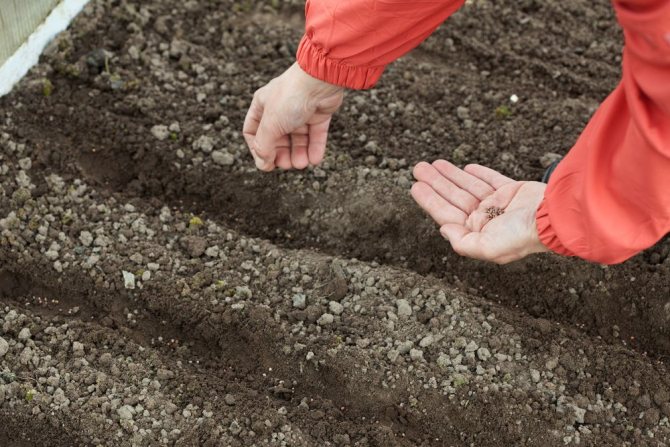

Sowing beets is a snap
Important! A few days before planting, it is recommended to take the seedlings outside and place them in the shade to harden the young plants.
This method of planting saves seeds by eliminating the need for thinning crops.
Important! There are other ways to save space when boarding. For example, you can plant different vegetables in the same garden. Beets go well with legumes, radishes and onions.
Beet care
Care Highlights:
- Loosening the soil. They are carried out regularly. It is necessary to provide air access to the roots.
- Thinning of seedlings. One seed produces several sprouts. If you do not remove the excess, then the root crops will grow medium-sized. It is carried out in the absence of the sun on wet ground twice a season: after the formation of 3-4 leaves, a distance of 5 cm between the plants is left; at the time of the formation of root crops, it is already 7-10 cm. In the first thinning, the removed seedlings can be transplanted, and in the second, small tubers are eaten.
- Watering is carried out not only at the root, but also on the foliage, because she also needs moisture. You can make grooves between the rows and direct water along it. In dry weather, this is done more often and more abundantly. Lack of moisture in the soil is bad for the taste and size of the fruit. It is better not to moisten the soil before harvesting for 7-14 days.
- Top dressing only if necessary with herbal infusions or yeast fertilizers. Others are not recommended. It is enough for the beets that they brought into the ground before planting. You can water with salt water once a month (10-15 g per bucket of water).
Classification, assortment
Depending on which food organ of the plant is used for food, two varieties of chard are cultivated - leaf or chisel and petiolate (stem). The first form is closer to salads, greens are consumed raw, the second, like spinach, is more often used in stews, fried, boiled dishes.
Sheet
Plants of leafy chard are smaller in size, represent a lush rosette of vertical or semi-vertical leaves 15–25 cm high. Leaves and petioles are dark green, with a purple tint, burgundy veins. After cutting, foliage grows several times per season, like sorrel. Chard cutter is less common than petiolate; we grow only a few varieties of this type of beet.
- Bulls Blood is a salad variety with glossy purple leaves and purple stalks. The greens are very juicy and tender, ready for consumption a month after germination.
- Volcano is a variety with dark green tops and burgundy roots, a rosette 25 cm high. Up to 700 g of green products can be obtained from one plant.
- Variety Lyons - low bushes with a lush rosette of light green leaves. The greens are juicy and fleshy, slightly larger than spinach in size.
Petiolate
The petiole form of chard beets is represented by a large assortment and color palette. The plant grows to a height of 45 to 70 cm, forming a lush rosette. A characteristic feature is a long fleshy petiole, turning into a wide vein.Let's take as an example several well-known varieties.
- Variety Pomegranate of medium ripening (80 days), grows to a height of 70 cm. The tops are light green, with purple petioles and veins. From one bush, you can prepare up to a kilogram of petioles and leaves.
- Emerald is a high-yielding early variety with a compact rosette no more than 45 cm high. The leaves and stem are green.
- Beetroot is a cold-resistant medium-ripening variety. Beautiful, medium-sized dark green leaves with a white vein and stem.
- Bride is an early variety, drought-resistant, very juicy. The bush grows up to 60 cm in height. The dark green leaf blade is intersected by a white with a golden sheen vein, turning into a petiole of the same shade.
Note! Varieties with red, yellow and silver petioles are especially decorative. Planted along the edge of a flower bed, a border, they will give greenery all summer long, and please the eye.
Diseases and pests of beets
Burak rarely gets sick. If the order is observed on the site (they are removed, dug up), the necessary crop rotation (alternate planting of beets with other plants that do not undergo similar diseases), are treated with copper preparations, then a good harvest is obtained. For prevention, the beds are treated with a manganese solution or hot water.
The harvested crop must be dried before storing it.
The main pests of root crops include rodents, bear and moles. They are spoiled by slugs, snails, wireworms, aphids and beet fleas. They are affected by rot (gray, red, etc.) and a nematode (a dangerous parasite).
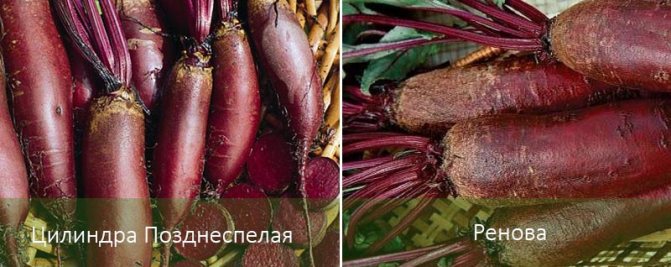

They fight pests with folk remedies:
- infusion of onion peel;
- dusting with wood ash or tobacco dust;
- infusion or decoction of hot pepper.
If this is not enough, then approved drugs are used.
Accounting for plants - predecessors
Good predecessors for beets are:
- squash and squash,
- tomatoes and eggplants,
- sweet and bitter peppers,
- potatoes and peas,
- cucumbers and onions.
But after cabbage sowing a root crop is not recommended, and planting the beets themselves on the same garden bed for the second city in a row is also not advised. The crop will be poor and of poor quality, possibly damaged by pests and diseases remaining in the soil after the previous cultivation of the same plant.
Mr. Summer resident advises: the secrets of growing delicious beets
To get a tasty sweet root vegetable, you need to take proper care of it. In addition, they also recommend performing a number of actions:
- Watering with salt water to increase the sugar content and prevent the appearance of pests (summer fly, white butterfly).
- Irrigation with boric acid solution (10 g per 10 l) once a season or soaking seeds in it (10 g per 2 l) for 10-15 minutes before planting.
- Thinning. It is better to leave a distance of 6 cm between the plants. If more, then the roots will turn out to be large, but not so tasty.
- The beets sticking out of the soil will add sweetness to them.
- Prevention of surface crust formation. Obligatory loosening. You can put mulch between the rows (cut grass, peat, black spunbond).
- Timely cleaning. Do not allow root crops to grow larger than 6-8 cm in diameter.
Thinning
If the seedlings were planted in a common container, when two true leaves appear, the beets are picked into separate containers, you should not shorten the roots of the seedling.
When planting a vegetable with seeds, as soon as the first shoots appear on the surface of the earth, thinning is carried out:
- The first thinning is carried out in the phase of unfolding the first two true leaves. The distance between the shoots is 4 cm. The shoots that have been pulled out can be planted in a new, free place.
- After 2.5 weeks, re-thinning is carried out, leaving a distance between the shoots of 7 cm.By this time, small roots are formed, which can be used for cooking.
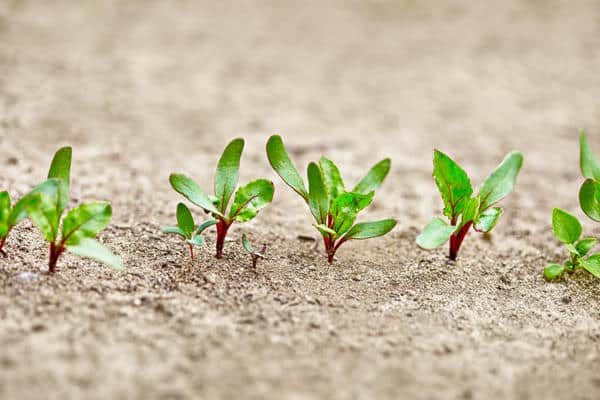

Knowing the rules on how to dive beets in the garden, you can get juicy, healthy roots. In addition, it is important to follow the beet planting scheme in your area.
Reproduction
The culture is propagated by seeds. Testes are formed in the second year of the plant's life.
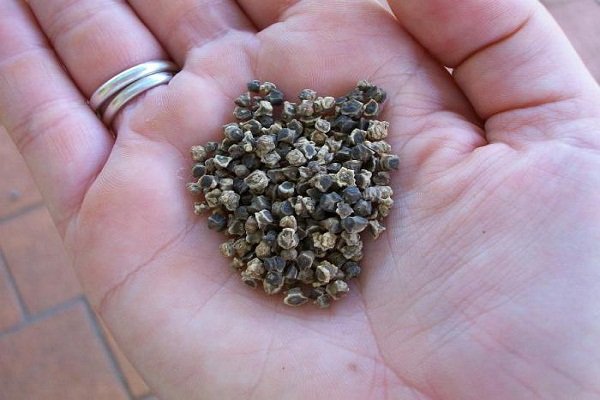

How to prepare seeds:
- cut off ripe testes;
- hang to dry under a canopy;
- when the seeds are fully ripe, remove them from the testes;
- Divide the seeds into paper bags and store in a dark, dry place.
Biological features
Biological features. Food beets are thermophilic. Germination is possible at + 5C, optimal - + 20C, + 15 ... + 18C - before the start of root crop formation, and after - + 20 ... + 25C.
If the weather is cool throughout the entire growth (0 ... + 10C), then there is a high probability of the rapid formation of flowers.
The plant is light-requiring. Beets react well to moisture; with abundant irrigation, they give a good weight gain.
Beets prefer moderate irrigation... This will prevent it from becoming fibrous or loose. Sandy loam or loamy soil rich in humus is suitable for planting.
Beets do not like acidic soil very much. Even with a low acidity, the yield drops sharply. In this case, experts advise liming the soil.
Subsort
Leaf parsley - planting and care
Beetroot has several varieties that are equally popular among gardeners:
- Swiss chard is a type of leaf beet that has been called herbal stalk. The bright scarlet color of the veins on the plant makes this variety stand out from the rest. In spring, this is one of the first plants that pleases with its harvest;
- Schnitt Chard - This variety can be called "roman cabbage". After the crop is cut once, new leaves appear again. The vegetable is more frost-resistant than the previous variety.
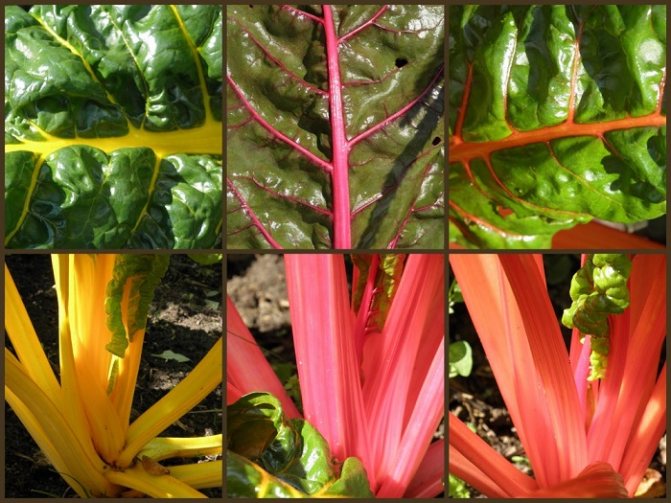

Each variety has its own distinctive external features.
Application
How does a person use a vegetable? It is used in animal husbandry for feeding animals, especially with a silage type of feeding. There are a lot of alkaline minerals in beets, which has a positive effect on reducing the increased acidity of the stomach, arising from the acids contained in the silage. The root crop itself is a valuable feed in animal husbandry. Beets are fed to cattle, pigs, sheep, rabbits and other animals.
Contraindications to use


Eliminate the use of vegetables when:
- Kidney stones.
- Diabetes mellitus.
- Diarrhea.
- Certain diseases of the gastrointestinal tract.
- Hypotension.
- Renal failure.
- Allergies.
During pregnancy, beets are simply necessary.... It has everything for mom and baby. Unless, of course, there are no problems listed above.
Allergy
Allergy is caused by intolerance to sulfates, which at one time fertilized the culture. Another cause of allergies is the body's intolerance to glucose or fructose, which break down from sucrose. This can be caused by a malfunction of the internal organs of a person.
Children also often suffer from vegetable allergies, "due" to a lack of digestive enzymes or a large amount of fiber in the product, which irritates the children's intestines, and also causes colic and bloating. In infants, allergens come from the mother's milk. Read about whether beets are allowed for breastfeeding here.
Feeding various animals with this beet
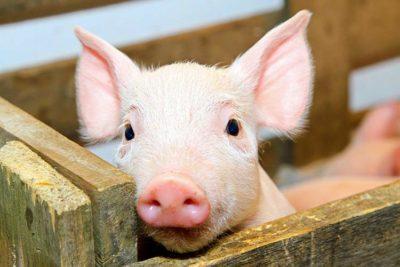

Both root crops and tops are used in the diet of dairy cows to increase milk and improve its taste, as well as other cattle, pigs, pigs, sheep, goats, rabbits, chickens, and other farm animals. Read about the peculiarities of the use of fodder beets by animals here.
Fodder beet is a product of great agricultural importance, not too demanding and quite unpretentious, but at the same time it is very useful for animals. With proper cultivation techniques, it gives high yields, so many villagers grow it, keeping cows, pigs and other animals.
How to give to children?
For the first time, beetroot puree (half a teaspoon) is given no earlier than 8-12 months from the birth of the child. After taking a new product, you need to look at the reaction of the body. In the absence of any violations, safely increase the dose. I offer beetroot juice not earlier than 12 months. It also needs to be handled with caution and introduced into the diet with small doses (2 drops). We talked about this in more detail in another article.
Interesting Facts
In ancient Rome, beets were considered a symbol of quarrels, discord and gossip. If a person wanted to communicate his dislike for another, then he threw a vegetable into his house. In many cultures, it was believed that if a man and a woman bite off the same beet, they will love each other.
Historical fact: in 1975, during the Apollo-Soyuz test project, Soviet cosmonauts treated American colleagues to beetroot borscht. The Delphic Oracle claimed that beets have mystical powers. “Taking a favor in the beet fields” - this phrase meant visiting brothels in the beginning. XX century.
Beet juice can be used to measure acidity: when added to an acidic solution, the liquid will turn pink, and in an alkaline solution, it will turn yellow.
Testimonials
★★★★★
Ekaterina T., 56 years old, housewife, Lipetsk region I have been growing leaf beets on the site for many years. I really like the taste of the leaves, I add them to salads, I cook beetroot. There are practically no pests on it, for 5 years I saw aphids once, which I quickly expelled with the help of a soap solution.
★★★★★
Roman Sh., 60 years old, amateur gardener, Novosibirsk region. I grow chard in a greenhouse like regular beets. The vegetable is very picky about watering, but otherwise the care is very simple. The taste of the leaves is excellent, I use them for cooking green borscht.
By growing Swiss chard, you can easily provide yourself with early vitamin greens. With the right crop care, you can cut the leaves from June until the very frost.
0
Chemical composition
One kilogram of root vegetable contains:
- 0.12 feed units, which corresponds to the nutritional value of 120 g of seed oats;
- water 80-88%;
- dry matter 9-14%;
- fiber 1.2%;
- fat 0.15%;
- sugar 6%;
- digestible protein 0.9%.
Attention! The root vegetable contains a lot of easily digestible carbohydrates, valuable amino acids, pectin substances, vitamins, potassium and other minerals are present. The foliage also has enough nutrients, vitamins, organic acids and minerals, and it contains twice as much protein as root vegetables.

